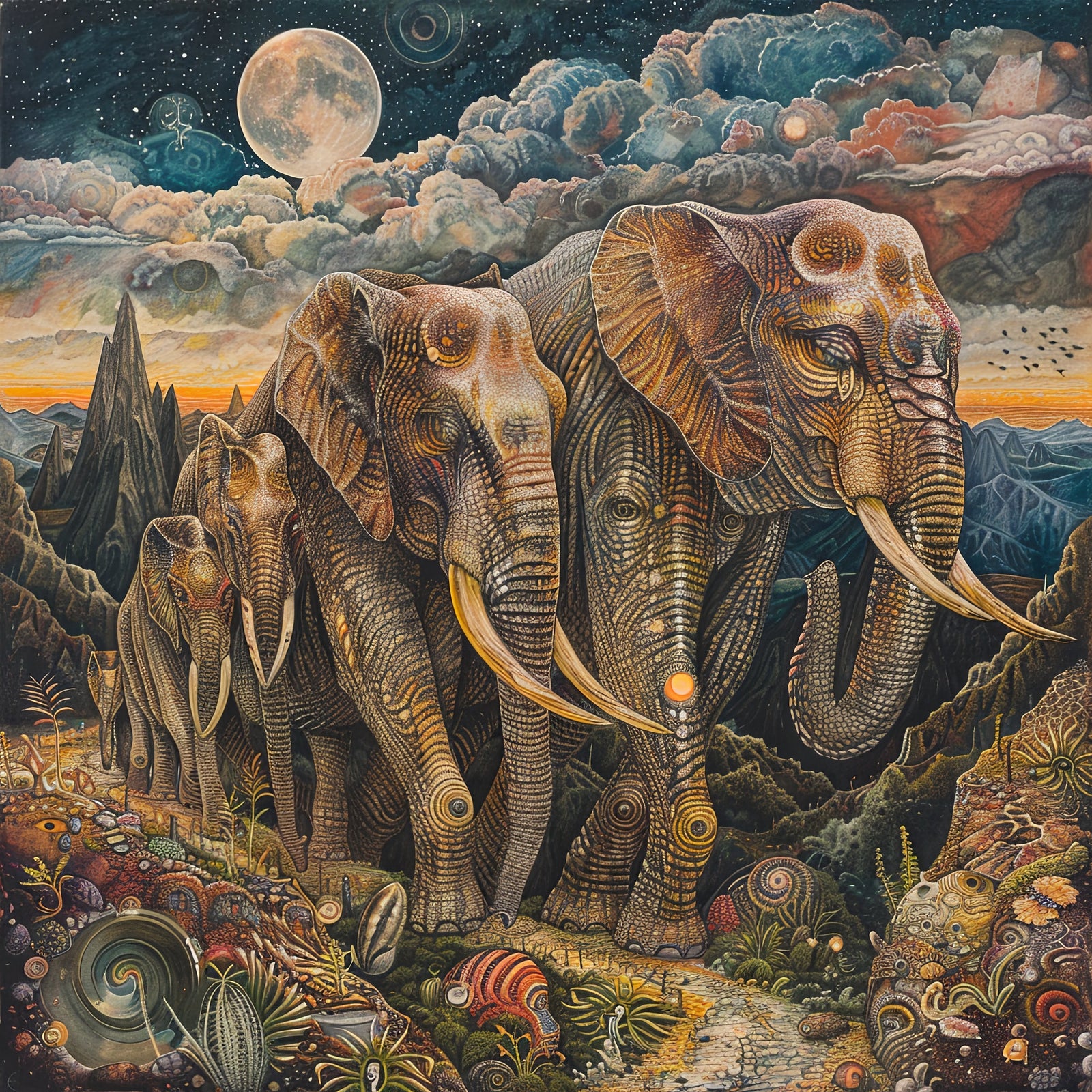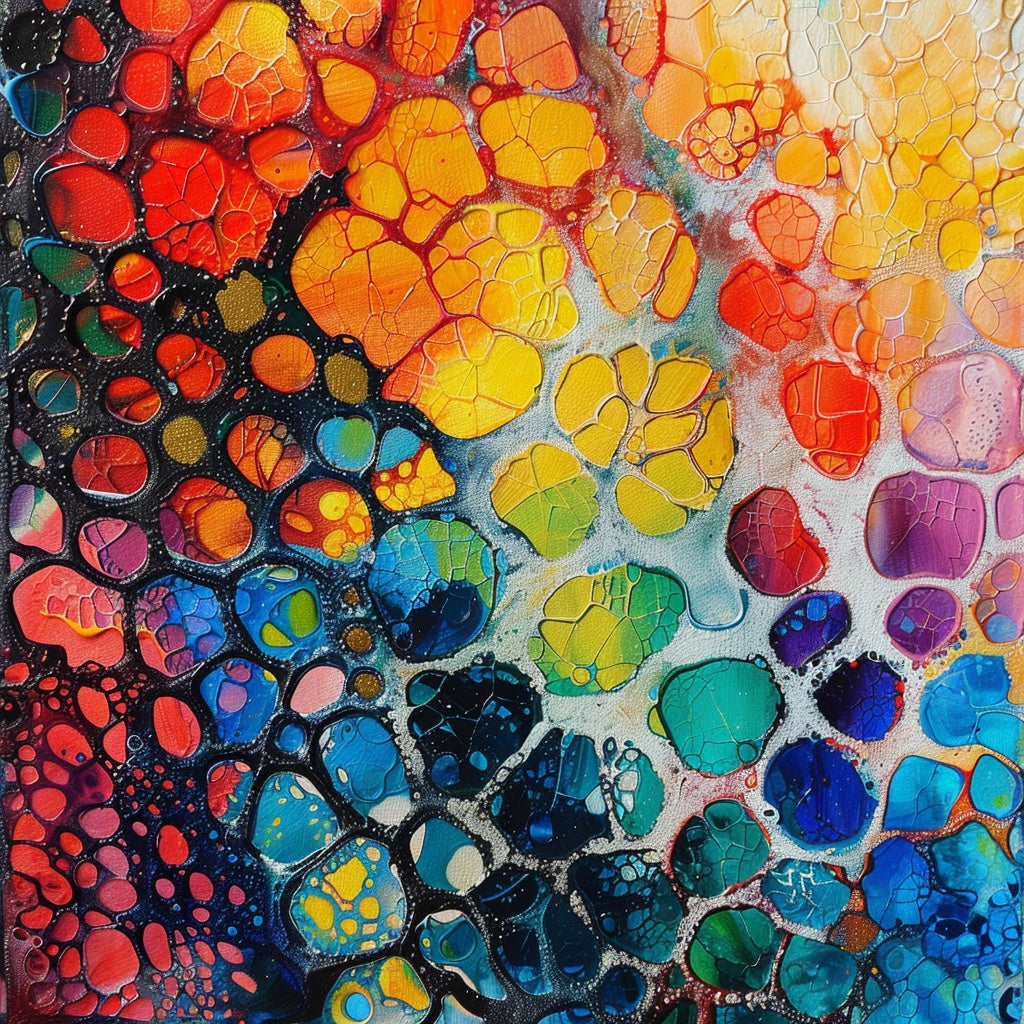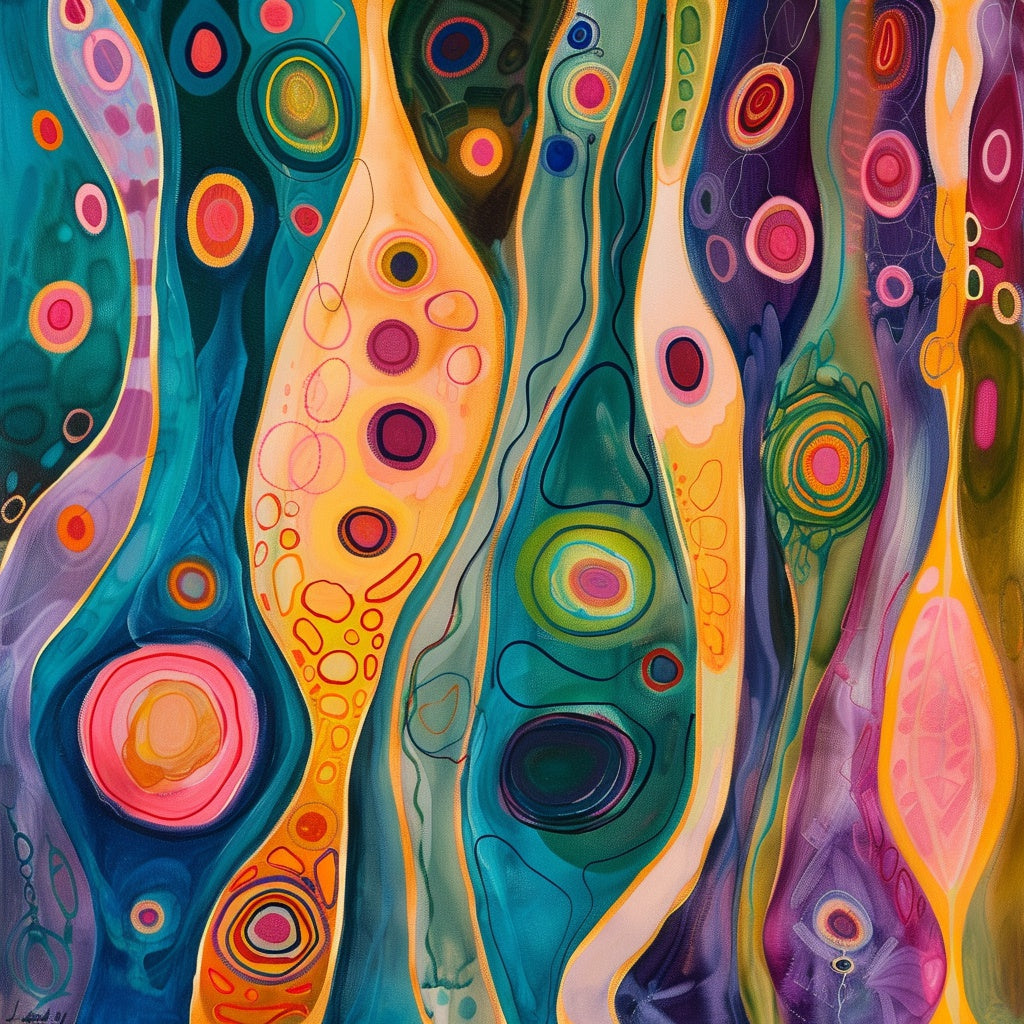Coding AI Art: A Comprehensive Guide
Welcome to the exciting world of AI art! This blog post will serve as your guide to understanding and creating art using artificial intelligence. AI is transforming the art world, allowing for the creation of unique and captivating pieces through computer algorithms [1]. This guide will provide you with the knowledge and resources you need to begin coding your own AI art.
Table of Contents
Understanding AI Art
Key Techniques in AI Art Coding
Essential Tools and Libraries
Creative Aspects of AI Art Coding
Sharing and Distributing AI Art Code
Conclusion
Footnotes
Understanding AI Art
AI art, also known as generative art, uses artificial intelligence techniques, specifically machine learning, to create, enhance, or modify artistic works [2]. Instead of directly manipulating tools and materials by an artist, AI art relies on algorithms to produce the final artwork [2]. These algorithms learn from large datasets of images and text, identifying patterns and relationships that inform the creation of new artwork [2]. This makes AI art accessible to more people through user-friendly tools and platforms, which expands the range of people able to create art [2].
Neural Networks and Large Language Models
Neural networks are a key component of AI art. These complex computer systems are inspired by the structure of the human brain, consisting of interconnected nodes that process information and learn from data [3]. By training a neural network on a vast collection of images, it can learn to recognize and generate similar images [3]. Large Language Models (LLMs) also play a vital role in AI art by helping AI systems understand user intentions and translate text prompts into visual representations [3]. This process bridges the gap between language and artistic expression [3].
AI art is not limited to digital images; it includes various creative expressions such as paintings, sculptures, and music. This versatility demonstrates the broad potential of AI in the creative field [4].
Key Techniques in AI Art Coding
Several techniques are used in coding AI art. Each technique has its own strengths and applications:
Generative Adversarial Networks (GANs)
GANs are a class of neural networks that include two main components: a generator and a discriminator [4]. The generator creates new images from random noise, while the discriminator attempts to distinguish between real images from the training data and AI-generated images [4]. This adversarial process pushes the generator to create more realistic and convincing artwork [4]. Imagine a counterfeiter (the generator) trying to create a fake bill that a detective (the discriminator) cannot identify, which pushes the counterfeiter to improve his work to fool the detective.
Style Transfer
Style transfer involves applying the artistic style of one image to another [4]. An algorithm analyzes the features and patterns of a style image (e.g., a Van Gogh painting) and transfers those characteristics to a content image (e.g., a photograph) [4]. This results in a new image that blends the content of one with the style of another, creating a unique fusion of artistic elements [4]. Think of it as photographing and painting it in Van Gogh's style to create a new artistic work.
Evolutionary Algorithms
Inspired by natural selection, evolutionary algorithms start with a population of randomly generated images [4]. These images are evaluated based on specific criteria, and the “fittest” images are selected to reproduce and create new variations [4]. This iterative process leads to the evolution of more sophisticated and aesthetically pleasing artwork as the algorithm explores different possibilities [4]. It is like a Darwinian process for art, where the best “artwork” survives and reproduces.
Deep Learning Algorithms
Deep learning algorithms use complex neural networks with multiple layers to analyze and generate art [4]. These algorithms can learn intricate patterns and representations from data, allowing for the creation of highly detailed and nuanced artwork [4]. These algorithms are beneficial for tasks that involve a lot of complexity and nuance.
Image Synthesis
Image synthesis involves creating new images from large datasets of other images [1]. By analyzing patterns and features in the training data, the AI system can generate novel images with similar characteristics but not copies of the originals [1]. This technique allows the creation of unique and diverse artwork based on learned information [1]. It is like learning the rules of an art form and creating a new piece that is not a copy but of the same art form.
Creative Coding
Creative coding focuses on using code for artistic expression rather than functional results [1]. Artists and programmers use code to create interactive experiences, generative art, and dynamic visuals that push the boundaries of traditional art forms [1]. This approach emphasizes the aesthetic and emotional impact of code as a medium for creative exploration [1].
Essential Tools and Libraries
To code AI art, you’ll need specific tools and libraries. Here’s a summary of some of the most popular options:
| Tool/Library | Description | Use Cases in AI Art |
|---|---|---|
| TensorFlow | An open-source deep learning framework developed by Google. | Building and deploying machine learning models for image generation and style transfer [5]. |
| PyTorch | An open-source deep learning framework developed by Facebook's AI Research lab. | Experimentation and research in AI art, particularly for tasks involving dynamic computation graphs [5]. |
| Scikit-learn | An open-source Python library for machine learning. | Image classification, data preprocessing, and model evaluation in AI art projects [5]. |
| Keras | A user-friendly high-level API for building and training neural networks. | Simplifying the development of deep learning models for AI art, especially for beginners [5]. |
| OpenCV | An open-source computer vision library. | Image manipulation, feature extraction, and object detection in AI art [5]. |
| Hugging Face Transformers | A library providing pre-trained models and tools for natural language processing (NLP). | Generating text descriptions for AI art, incorporating text-based prompts and exploring the intersection of language and visual art [5]. |
| NVIDIA Imaginaire | A 2D image synthesis library developed by NVIDIA. | Generating high-quality and realistic images for AI art applications [5]. |
| NVIDIA Omniverse | A platform for creating and operating metaverse applications developed by NVIDIA. | Building and deploying AI art models in virtual environments and exploring the use of AI in immersive experiences [5]. |
| FFCV | An optimized data pipeline for accelerating machine learning training. | Optimizing the training process of AI art models by efficiently loading and processing large datasets [5]. |
| ONNX Runtime | A cross-platform inference engine for machine learning models. | Deploying AI art models on different devices and platforms, ensuring efficient and consistent performance [5]. |
| TensorRT | An SDK for high-performance deep learning inference. | Optimizing AI art models for inference, enabling faster and more efficient generation of artwork [5]. |
Creative Aspects of AI Art Coding
AI algorithms provide the foundation for generating art; the creative process involves more than just running code. It involves a deep understanding of the AI art process and how to manipulate it.
Crafting Effective Prompts
The prompts you provide are crucial in shaping the AI’s output [6]. Experiment with different words, phrases, and descriptions to guide the AI towards your desired artistic vision [6]. For instance, instead of prompting "a tree," try "a gnarled oak tree in a misty forest at dawn." The more specific and descriptive your prompts, the more likely you are to achieve the desired artistic outcome [6]. It's like giving precise instructions to a painter; the more transparent the instructions, the more likely the result will match your vision [6].
Choosing the Right Parameters
AI art tools often have various parameters that you can adjust, such as the level of detail, color palettes, and artistic styles [3]. Understanding how these parameters affect the output allows you to fine-tune the generated artwork to your liking [3]. For example, you can experiment with different color schemes or levels of abstraction to achieve the desired aesthetic effect [3]. It is like adjusting the settings on a camera to get the perfect shot.
Data Input and Preprocessing
The quality and diversity of the data used to train AI models significantly influence the style and content of the generated art [3]. Curating and selecting relevant training data is crucial for achieving specific artistic goals [3]. This involves cleaning the data, removing errors or inconsistencies, and ensuring it represents various artistic styles and subjects [3]. It is like preparing the paint and canvas before starting an artwork; the quality of the materials affects the final product.
Fine-tuning AI Models
Fine-tuning involves adjusting the model’s parameters and training process to optimize for specific artistic styles and qualities [7]. This allows you to tailor the AI model to your creative needs and achieve more refined and personalized results [7]. For example, you could fine-tune a model on a dataset of Impressionist paintings to generate artwork with a similar style [7]. This process is similar to a musician practicing scales to master their instrument.
Iterative Refinement
AI art generation is often an iterative process [8]. You may need to experiment with different prompts, parameters, and models to achieve your desired results [8]. Embrace this iterative approach and refine your code and creative inputs as you explore different possibilities [8]. It is like sculpting; you don't get it perfect on the first try; instead, you continue to refine your work until it is finished.
Human-AI Collaboration
Human-AI collaboration is crucial in the training process and creative development of AI art [7]. Artists and engineers work together to guide the AI’s innovative development, providing feedback on the generated artwork and ensuring it aligns with human aesthetic sensibilities [7]. This collaborative approach fosters a symbiotic relationship between human creativity and AI capabilities, leading to innovative artistic expressions [7]. It is like a collaborative dance between the artist and the AI.
Sharing and Distributing AI Art Code
Once you’ve created AI art code, sharing it with others can contribute to the growing community of AI artists and developers.
Online Platforms
Platforms like GitHub, GitLab, and Bitbucket provide repositories for storing and sharing code [9]. You can create public repositories to make your AI art code accessible to others, allowing them to learn from your work, contribute to it, or use it as inspiration for their creations [9]. It is like publishing your work in a library for others to read and learn from.
Creative Coding Communities
Online communities and forums, such as Reddit’s r/creativecoding, offer spaces to share your code, discuss techniques, and collaborate with other artists [10]. These communities provide valuable feedback, support, and inspiration for AI art coders [10]. It's like joining a club of like-minded people who can support and encourage you.
AI Art Platforms
Some AI art platforms, like Google Colab and Runway ML, allow you to share your code and models directly within their environments [11]. This enables others to easily access and experiment with your work, fostering collaboration and knowledge sharing [11]. It is like having a shared art studio where everyone can learn from each other.
Interactive QR Codes
You can generate unique and visually appealing QR codes that link to your AI art code or online galleries [12]. This allows you to easily share your work with others through physical or digital displays, making it accessible to a wider audience [12]. Think of it as an instant access portal to your code and work [13].
Conclusion
Coding AI art is a dynamic field that combines technical skills with creative expression [14]. By understanding the underlying techniques, utilizing the right tools and libraries, and embracing the creative aspects of the process, you can start creating innovative AI-generated artwork [14].
The future of AI art holds immense potential [14]. As AI technology advances, we can expect more sophisticated and creative applications of AI in the art world, leading to new forms of artistic expression, human-AI collaborations, and a deeper understanding of the relationship between technology and creativity [14]. Dive in, explore, and contribute to the exciting future of AI art [14]!
Footnotes
[1] What is AI art & how does it work? - Adobe Firefly
[2] How to Make AI Art: Essential Guide for Artists - eWEEK
[3] How to Make AI Art in 2025 (Detailed Tutorial) - Elegant Themes
[4] What is AI Art? A Conversation with ChatGPT - Niio Blog
[5] Excerpts from "Coding AI Art: A Guide"
[15] How to use AI Art and ChatGPT to Create an Insane Web Designs - YouTube
[6] How to Write AI Art Prompts? (Examples + Templates) - Hypotenuse AI
[8] Transform reference images into STUNNING AI ART with Midjourney - YouTube
[12] AI Art QR Codes - How to use Gooey.AI Workflows - YouTube
[7] AI-Generated Art: Bridging the Gap Between Creativity and Code | Blog - Codiste
[16] What is Creative Coding? - Meadows School of the Arts, SMU
[14] Creative Coding with OpenAI: Generating Art and Music - Signity Solutions
[9] jonathandinu/ai4artists: A list of AI Art courses, tools, libraries, people, and places. - GitHub
[10] Different standards of criticism to AI generated content : r/gamedev - Reddit
[11] What is AI generated art? + How to make AI art - IFTTT
[17] How To Create AI Art Prompts (+ 50 Top Examples) - Gelato
[13] How To Create A QR Code As Art with AI Art Generator - ICTEvangelist



Leave a comment (all fields required)